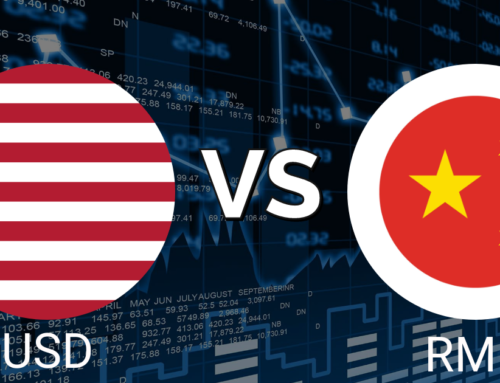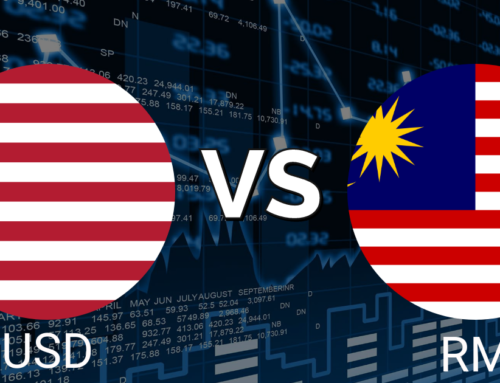
The USD is the most widely circulated currency in the world, particularly among the emerging markets where the US is trying hard to make its presence felt. The XRP is the native currency of the Ripple network. Ripple has been seen by many as one of the solutions to the problem of an increasing number of non-traceable transactions being conducted across borders. The popularity of XRP expanded with the rise of Ripple and it became a part of a number of financial institutions and payment networks.
What is XRP?
XRP is a cryptocurrency that can be sent from one Ripple user to another. It is the native currency of RippleNet, a blockchain-based payments network that allows for faster and cheaper cross-border transactions between banks.
Sending money overseas through the existing financial system generally takes one to four business days and is costly. It’s possible to settle cross border transactions on the open-source XRP Ledger blockchain in less than five seconds at a fraction of the cost of the more traditional methods, using XRP as a bridge currency.
History of XRP
In 2011, three engineers David Schwartz, Jed McCaleb, and Arthur Britto began working on the XRP Ledger (XRPL). Fascinated by Bitcoin’s flaws, they set out to develop a superior version that fixed them to create a digital asset more sustainable and suited for transactions.
In 2012, Ripple’s initial creators pre-mined 100 billion XRP tokens. The founders gave Ripple with 80 billion tokens to finance future activities and development, with the remaining XRP going to the founding team.
Unlike bitcoin and other mined cryptocurrencies, where new coins enter the market in the form of block rewards, XRP enters circulation whenever Ripple decides to sell coins from its pre-mined stash on the secondary market.
Road to Digital Asset
In 2017, Ripple transferred 55 billion of its 80 billion XRP coins to an escrow account from which it could sell a maximum of 1 billion tokens per month on the secondary market. To improve transparency and predictability in XRP sales, Ripple did that.
Each month, the number of unsold tokens is refunded to escrow and re-distributed at a later time. The last 32 months have seen the release of 32 billion XRP from escrow, with 26.7 billion returned. As of October 2021, the escrow account contained 47.1 billion XRP tokens.
The Value of XRP
Over the next three and a half years, XRP’s value increased by 2,500% before doubling again in 2013. In December 2013, XRP rose by almost 11-fold in 15 days, then one year later it surged 454 percent in 33 days.
XRP’s price was $0.01 for most of 2018, although it increased gradually until the crypto market began to gain momentum in early 2017. Between March 22, 2017, and Jan. 8, 2018, XRP’s value grew exponentially in tandem with bitcoin and other cryptocurrencies at the time, increasing by more than 51,000 percent from under one cent.
XRP’s price dropped to $0.10 over the next few months as its momentum slowed above $3. In a few months, the value tumbled to $0.10. Until April 2021, when the overall cryptocurrency market began to recover, XRP’s price remained beneath $3. In May, the XRP price surpassed $1.98 for the first time since November 2017. However, the price increase was minor, and it soon fell below $1.
How XRP works
Ripple is the native currency, and it’s designed to act as a “translator” for hard-to-match fiat currencies. In other words, if no market makers are available on the network to trade shekels for shillings, then XRP will be used as a substitute. Shekels may be sold for XRP and then used to acquire shillings.
The XRP ledger uses the Consensus algorithm, which differs from proof-of-work and proof-of-stake protocols in that network participants are known and trusted by other members. They are not rewarded for safeguarding the network like miners are.
The process starts by the network’s initial validators agreeing to create a new block, which is known as a “ledger version.” The block’s content cannot be altered. This allows servers on the network to keep track of all ledger events.
Connected programs can utilize HTTP or WebSocket APIs to access the XRP Ledger. They may also make use of a library, which is available in a variety of programming languages, including Java, JavaScript, Python, and more. That ledger is “open source,” which means its software code is accessible to the public.
Ripple and its native cryptocurrency, XRP, have several uses. One of the most notable is that it enables Ripple to provide on-demand liquidity (ODL) for Ripple’s main service – a worldwide payments network of financial companies that was formerly three separate services by 2019, including xCurrent.
The XRP-to-fiat currency exchange is simply the procedure of swapping one fiat currency, such as US dollars, for XRP tokens, then sending those to a receiving account that converts them to local fiat money, such as Philippine pesos. Unlike fiat currencies that can take days to send, XRP transactions usually take around 3 seconds.
USD News
- GBP/USD chalks in another down week despite late Sterling uptick - FXStreeton July 26, 2024 at 9:05 pm
GBP/USD chalks in another down week despite late Sterling uptick FXStreet
- Global RT-PCR Test Kits Market Size To Exceed USD 7.12 Billion by 2033 | CAGR Of 5.99% - GlobeNewswireon July 26, 2024 at 8:02 pm
Global RT-PCR Test Kits Market Size To Exceed USD 7.12 Billion by 2033 | CAGR Of 5.99% GlobeNewswire
- USD/JPY Price Analysis: Bears overtake bulls as pair remains below 154.00 - FXStreeton July 26, 2024 at 7:49 pm
USD/JPY Price Analysis: Bears overtake bulls as pair remains below 154.00 FXStreet
- USD/CHF gains momentum as bears take a breather, pair inch towards 0.8830 - FXStreeton July 26, 2024 at 7:43 pm
USD/CHF gains momentum as bears take a breather, pair inch towards 0.8830 FXStreet
- Global Space Tourism Market Size To Exceed USD 35108.7 Million By 2033 | CAGR Of 44.55% - GlobeNewswireon July 26, 2024 at 7:02 pm
Global Space Tourism Market Size To Exceed USD 35108.7 Million By 2033 | CAGR Of 44.55% GlobeNewswire
XRP News
- Ripple (XRP) to Surge? Expert Reveals 6 Bullish Factors - Watcher Guruon July 27, 2024 at 3:34 am
Ripple (XRP) to Surge? Expert Reveals 6 Bullish Factors Watcher Guru
- Here is How Much XRP You Need to Make $1M if XRP Hits $150, $258, $305 and $403 - The Crypto Basicon July 27, 2024 at 2:48 am
Here is How Much XRP You Need to Make $1M if XRP Hits $150, $258, $305 and $403 The Crypto Basic
- Ripple XRP VS SEC: Expert Weighs In on Settlement - Watcher Guruon July 26, 2024 at 11:35 pm
Ripple XRP VS SEC: Expert Weighs In on Settlement Watcher Guru
- Ripple’s XRP-Powered Payment Platform Expands to Over 80 Markets By The News Crypto - Investing.com Nigeriaon July 26, 2024 at 11:14 pm
Ripple’s XRP-Powered Payment Platform Expands to Over 80 Markets By The News Crypto Investing.com Nigeria
- Ripple (XRP) and Cardano (ADA) Stuck in Bearish Channel while RCO Finance (RCOF) Rises - DailyCoinon July 26, 2024 at 11:00 pm
Ripple (XRP) and Cardano (ADA) Stuck in Bearish Channel while RCO Finance (RCOF) Rises DailyCoin


